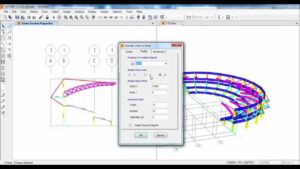Mastering the Craft: A Comprehensive Exploration of AutoCAD’s 2D and 3D Modeling Features

Introduction
AutoCAD, a powerful computer-aided design (CAD) software, stands as an industry titan, revolutionizing the way professionals conceptualize and execute design projects. This exhaustive exploration aims to unravel the intricate tapestry of AutoCAD’s 2D and 3D modeling features, offering an in-depth look into the tools and capabilities that have made it an indispensable companion for architects, engineers, and designers worldwide.
Section 1: The Foundation – Understanding 2D Modeling
Subsection A: Drafting Precision
Delve into the core principles of 2D modeling in AutoCAD. Uncover how the software’s robust drafting tools empower users to create precise, scaled drawings with unparalleled accuracy. From lines and circles to advanced geometric shapes, explore the fundamental building blocks of 2D design.
Subsection B: Layers and Object Organization
Navigate the importance of layers in AutoCAD’s 2D modeling environment. Understand how layers facilitate efficient organization and management of design elements, providing a structured approach to handling complex projects while maintaining clarity and ease of editing.
Subsection C: Annotations and Text
Explore AutoCAD’s annotation tools that enable users to add dimensions, text, and labels to their 2D drawings. Dive into the customization options available for text styles and dimensions, allowing for clear communication of design intent within the 2D space.
Section 2: Elevating Design – Transitioning to 3D Modeling
Subsection A: Extrusion and Solid Modeling
Embark on the journey from 2D to 3D modeling with AutoCAD’s extrusion capabilities. Understand how basic shapes can be transformed into three-dimensional objects, laying the groundwork for more complex 3D designs. Explore the concept of solid modeling and how it revolutionizes the representation of physical objects in the digital realm.
Subsection B: Mesh Modeling and Surface Creation
Uncover the intricacies of mesh modeling and surface creation in AutoCAD’s 3D environment. Delve into the tools that allow users to manipulate and sculpt 3D meshes, providing a level of detail and realism crucial for certain design applications.
Subsection C: Parametric Design and Constraints
Examine the power of parametric design in AutoCAD, where relationships and constraints drive the dynamic nature of 3D models. Explore how parameters can be defined to maintain design intent while allowing for quick modifications and iterations.
Section 3: Navigating the 3D Space
Subsection A: Orbit, Pan, and Zoom
Master the art of navigating the 3D space within AutoCAD. Learn how to effortlessly orbit around your models, pan across the design canvas, and zoom in for detailed examinations. Understand the importance of fluid navigation for a seamless 3D modeling experience.
Subsection B: Viewing Styles and Perspectives
Explore AutoCAD’s various viewing styles and perspectives, enhancing the visualization of 3D models. From realistic renderings to wireframe views, understand how different settings impact the representation of designs, aiding in both analysis and presentation.
Section 4: Advanced Features and Applications
Subsection A: Parametric Arrays and Dynamic Blocks
Delve into advanced features like parametric arrays and dynamic blocks. Uncover how these tools elevate efficiency by enabling the creation of intelligent, adaptable design elements that respond dynamically to modifications.
Subsection B: Rendering and Visualization
Explore AutoCAD’s rendering capabilities, transforming 3D models into photorealistic images. Understand how lighting, materials, and textures contribute to the visual appeal of rendered designs, making them suitable for presentations and client approvals.
Subsection C: Integration with Other Autodesk Products
Investigate AutoCAD’s seamless integration with other Autodesk products. Understand how interoperability with software like Revit and Inventor streamlines workflows, allowing professionals to harness the strengths of various tools within a cohesive design ecosystem.
Conclusion
In the dynamic realm of design and engineering, AutoCAD’s 2D and 3D modeling features stand as pillars of innovation. This comprehensive exploration has illuminated the diverse toolkit that AutoCAD offers, from the precision of 2D drafting to the immersive capabilities of 3D modeling. As professionals continue to push the boundaries of creativity and functionality, AutoCAD remains a steadfast companion, providing a canvas where ideas evolve into tangible, digital realities. Whether navigating the intricacies of parametric design or mastering the art of realistic rendering, AutoCAD continues to shape the landscape of design, empowering users to transform imagination into industry-leading innovation.






